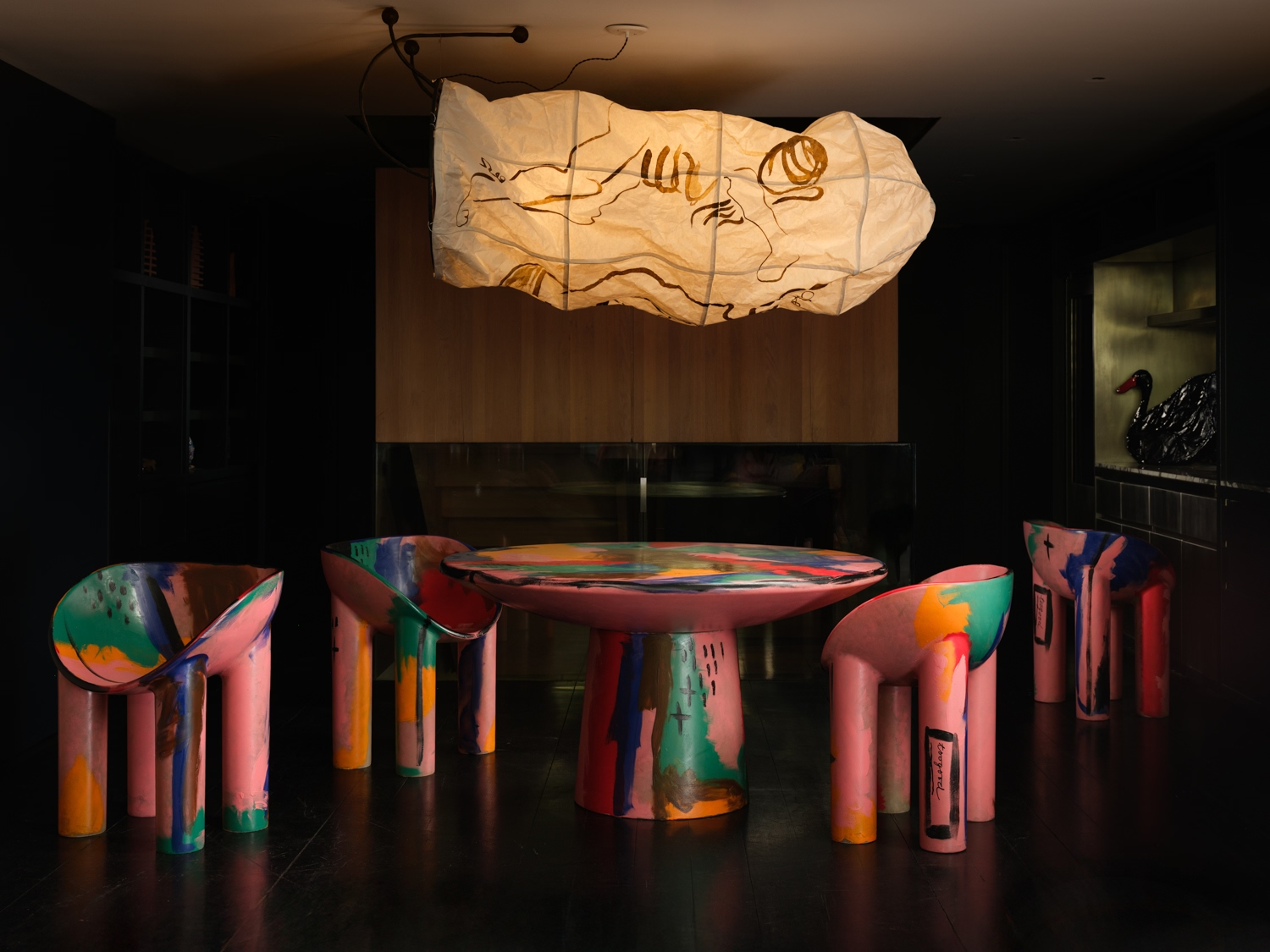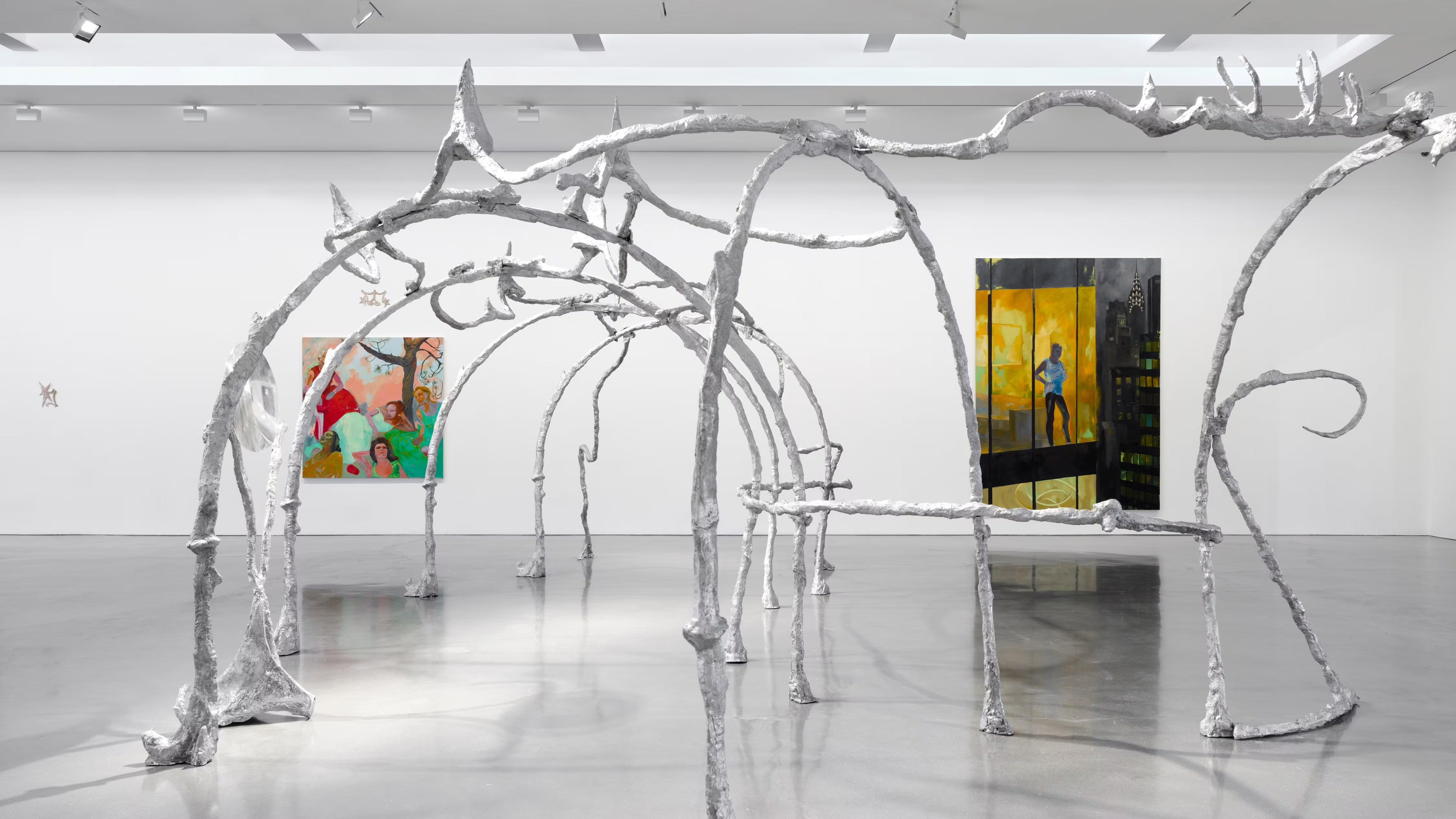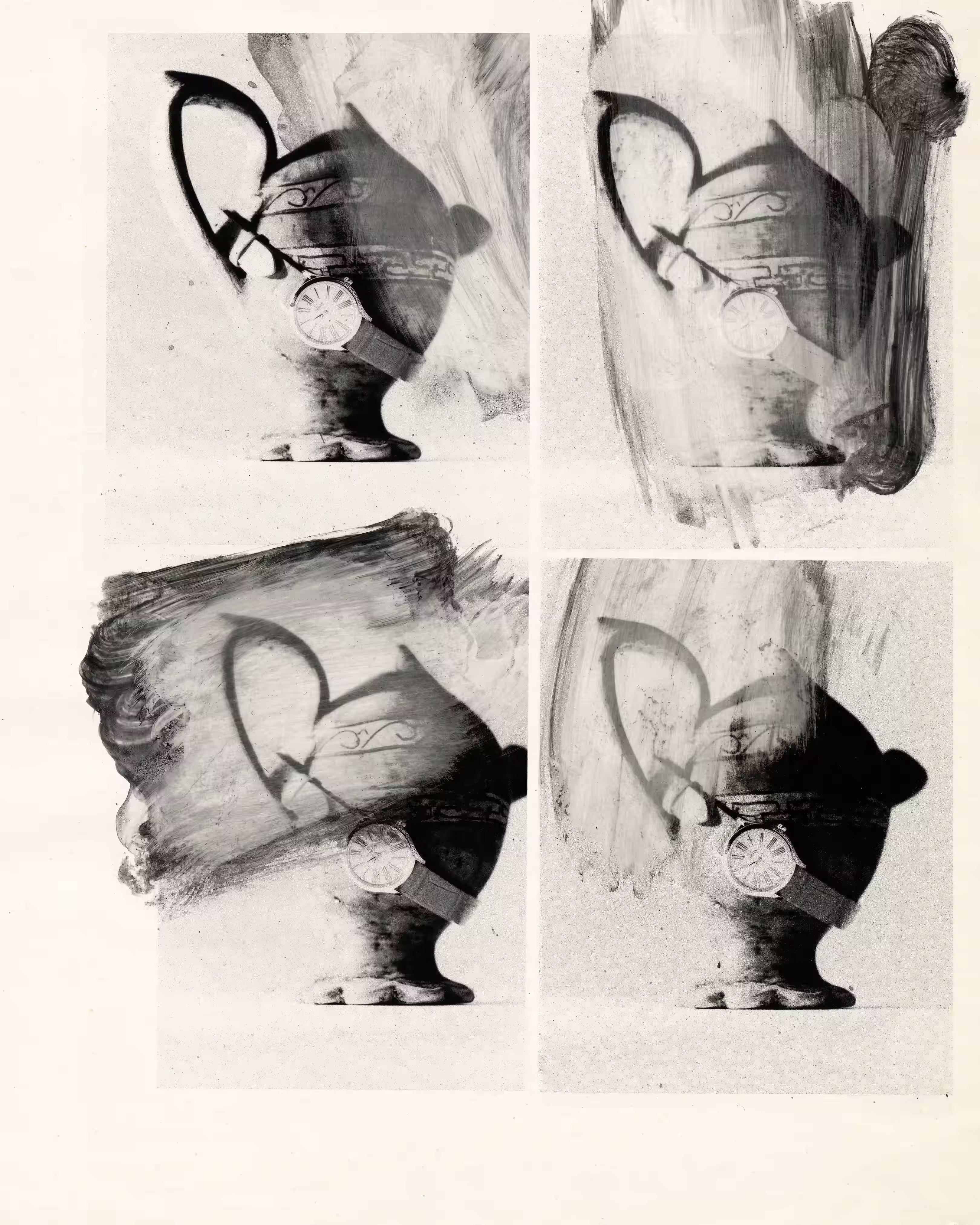“What if this body was the ideal protection/ from the death throes of patriarchy/ if this body was a lighthouse/ to the lovers who knew/ freedom was the arousing aspect,” asks the writer Adrienne Maree Brown in her 2022 poem “what if this body.” Over a year later, the words resonate even more through a new group show curated by Jasmine Wahi.
“Vampire::Mother,” which opens this week, features mostly new works by 15 contemporary artists, including Marilyn Minter, Mickalene Thomas, Bhasha Chakrabarti, Laurie Simmons, and Shoshanna Weinberger. Cinematic lighting and visceral, bodily themes flow throughout Anat Ebgi’s Los Angeles location in an exhibition co-realised by Vortic Curated. The light gray exterior of the gallery glows a soft red from the inside. This might appear womb-like to some but Wahi says it's a reference to the gory, frightening scenes of classic horror films such as Carrie, A Girl Walks Home Alone at Night, and 1998’s Blade. “In the first scene [of Blade], they are in an underground club in the middle of Chinatown in LA,” she remembers. “Behind the meat market, and the sprinklers come on gushing blood.” The curated works on view undulate between a lineage of feminist thought and multifaceted, nonlinear narratives that are more often seen in horror and fantasy.

“What's the weirdest thing to do? That's what I want to do,” says the curator. But Wahi's inclination towards the uncanny and strange is not merely for shock value. The artists and ideas she is drawn to subvert binary structors to poignant ends. Her curatorial projects, she offers, are “broadly about rights to bodily autonomy with a specific emphasis on queer liberation, trans joy, and reproductive justice all in the same space.”
To prepare for the exhibition, Wahi revisited ideas from a 2011 group show she did at Latitude 28 gallery in Delhi in which she presented works by artists that depicted female empowerment through investigating promiscuous imagery and violence within historical and religious iconography. (“And the Falchion Passed Through His Neck,” which included the likes of Samira Abbassy, Chitra Ganesh, and Hamra Abbas.) This time, for “Vampire::Mother,” Wahi decided to give her artists a three-page prompt that featured passages from Toni Morrisons’ novel Sula, Brown’s poem, as well as a list of visceral language that expanded and contracted from conceptual to literal. “Violence, centrifuge, motherhood, softness,” Wahi recalls. “Bloody, gushy, legs spread, legs in the air.” The exercise was the culmination of the curator’s over a decade-long collaborative spirit. “I wanted to see how others interpreted my ideas and see if those interpretations were aligned with the visions in my head,” she says. “I wanted to center the artists as visionaries.”

The results surprised her, which, Wahi admits, is the best-case scenario. They were more anatomical, tender, and tethered to womanhood in all its contradictions and conceits than the curator said she was expecting. She points to Would that I might make thee love books more than thy mother, 2023, Chakrabarti’s evocative and explicit painting on rawhide of a woman pulling scroll-like paper from her vagina. The warm-toned, close-up is a still from a performance piece the artist did as her thesis at Yale in 2022. In Nadia Waheed’s painting, Ohjal, 2024, a nude woman sits in a forest clearing, legs spread; a spotlight casts her resting form in a monochrome-tinted light against the green, tree-lined backdrop. Women’s bodies are depicted in intimate poses and spaces—reclining, unrobed, and unbothered in Chantal Joffe’s work (in the bath) and Minter’s (lounging, on the phone).

Next month these works will be transposed into the walls of a virtual vampire lair imagined by Wahi. In collaboration with the VR platform Vortic, they will be accessible online or via VR goggles inside Anat Ebgi's physical gallery. In this second, simulated world, viewers will enter “a giant gothic castle that has giant black marble pillars, houndstooth flooring, huge arches, and candle light,” the curator explains. Virtual doorways will lead to immersive, digitally-rendered rooms created by artists Chakrabarti, Simmons, and Weinberger, whose work will be magnified across the space to Yayoi Kusama-like infinity.
“I wanted to see how others interpreted my ideas and see if those interpretations were aligned with the visions in my head. I wanted to center the artists as visionaries.” — Jasmine Wahi
“When I was a small child being read to, I literally wanted to get inside my picture books and live there—designing a dollhouse and being able to navigate the interior as though it were at human scale is literally a dream,” notes Simmons, whose recent work deals with constructed A.I. environments. The vampire castle, in fact, was inspired partly by the artist’s own VR experience. “How weird would it be to find this contemporary dream dollhouse in a gothic, Beauty and the Beast castle?” Wahi muses about Simmons. There is a quality of bait and switch, notes the curator, that offers a subversive commentary on feminist work and existence. “It has a fun element to it, but when you think about what would happen in this type of strange domestic space, things have the potential to become darker.” Later this year, the pair—who originally connected over their shared, intersectional interest in women’s reproductive rights—will revisit their traveling exhibition “Abortion is Normal,” which they formed with artists Rebecca Pauline Jampol, Minter, Gina Nanni, and Sandy Tait in 2020.

Wahi’s efforts are particularly poignant in both projects. Especially at a time in which conversations around gender and identity politics have become increasingly charged and draconian legislation increasingly threatens the autonomy of queer, trans, and femme bodies. “When you think about what happens in this type of strange domestic space, things have the potential to become darker and more scary,” says Wahi. “This exhibition is about violence as power, sexuality as power—particularly thinking about it in the contemporary conversation where there is so much contention around women and trans and femme bodies, around who we are and how we operate.”
“Vampire::Mother” is on view through March 2, 2024 at Anat Ebgi at 6150 Wilshire Blvd, Los Angeles, CA 90048. The exhibition is also available to view online at Vortic.art, and a digital extension will be launched on Vortic.art on 28 February, until May 22 2024.












.avif)








.avif)


_result_result.avif)



.avif)

_result_result.avif)

_result_result.avif)
.avif)

_result_result.avif)


_result_result.avif)


.avif)




.webp)

.avif)


















%20(1).avif)
.avif)




.avif)
















.avif)


.avif)





















.jpeg)

.avif)

_11%20x%2014%20inches%20(2).jpg)







.avif)

.jpg)

%20(1).jpg)
.avif)
.jpg)

.jpg)
.webp)


.webp)



.webp)


.webp)


.avif)










.avif)
.avif)

















.avif)









.avif)



.avif)




















-min_result.avif)









.avif)







3_result.avif)
_result.avif)






_result.avif)




.avif)




.avif)













.avif)

.avif)










.avif)

.avif)










.avif)



.avif)


_result_result.avif)
















-min_result.avif)






.avif)
.jpg)
















_result.avif)

.avif)


.avif)







.avif)





.avif)

_result.avif)



.avif)














.avif)









.avif)


.avif)














.avif)




.avif)








.avif)

.avif)

.avif)



.avif)


.avif)




.avif)

.avif)

.avif)
.avif)
%20(1).avif)
.jpg)

%20(1).avif)








.avif)
.avif)

.avif)






.avif)




















.avif)
.avif)
